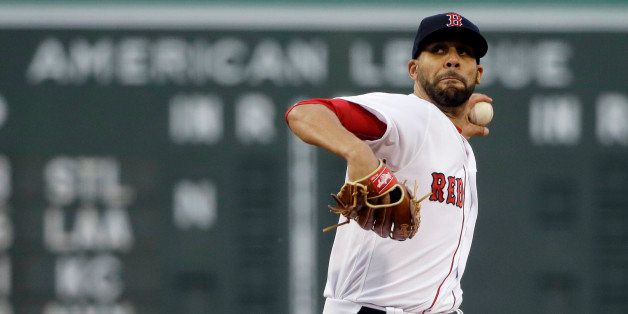
Pitching's cryptic nature has caused many headaches over the years, with fantasy owners representing a large portion of sufferers. We're here today to investigate how K-BB rates can alleviate the pain.
In case you missed our discussion on SIERA, click here. SIERA is greatly influenced by a pitcher's strikeout and walk rates, with the idea being that creating your own outs deserves more value while allowing batters to reach base for free is pure evil. Now perhaps you enjoy seeing more focused metrics, or would simply rather see the strikeouts and walks in a standalone stat.
Here's where a pitcher's K-BB rate can help you. This percentage is derived from taking a pitcher's strikeout rate per plate appearance and subtracting their walk rate per plate appearance. If a pitcher strikes out 20 percent of batters faced and walks 10 percent, then his K-BB rate is 10 percent.
The Importance of Percentages
Prescribing that one targets those who lead the league in strikeouts isn't providing any groundbreaking insight. The same goes for saying "avoid pitchers with many walks". Perhaps you've heard of K/9 and BB/9 -- the amount of strikeouts and walks over nine innings. Those grade pitchers on a per-inning basis, making for easy comparisons. While these rates have their place, we can do better.
Using K-rate and BB-rate compared to those aforementioned metrics may not seem like much, but utilizing "per-inning" metrics invites extraneous wrinkles into the equation when we're just concerned with strikeouts and walks. Analyzing strikeouts and walks per plate appearance gives a great look at the pitcher's talent and efficiency. Let's illustrate this with three scenarios:
Pitcher A strikes out the side in order, a 1-2-3 inning.
K/9: 27.00 (three strikeouts in one inning, multiplied by nine innings, gives 27).
K percent: 100 percent.
K-BB: 100 percent.
Pitcher B strikes out the first two batters, then allows consecutive singles before getting a strikeout to end the inning.
K/9: 27.00.
K percent: 60 percent.
K-BB: 60 percent.
Pitcher C also strikes out the first two batters and then allows consecutive singles, but then walks a batter before striking out the next guy to end the inning.
K/9: 27.00.
K percent: 50 percent.
K-BB: 33.3 percent.
You can see Pitcher A performed the best. Pitcher B did well but allowed two hits, making his appearance not as strong as Pitcher A's. Pitcher C was the "worst" of the bunch, allowing half of the batters he faced to reach base. Let's look at how each metric frames their performances. You'll see why K-BB deserves your attention.
K/9 says all three of those pitchers performed equally, tied atop that leaderboard with a perfect 27.00 mark. The metric isn't wrong, they all struck out three batters for their three outs, but you can plainly see that A > B > C.
K-rate shows off that nice A > B > C hierarchy reflected with 100 percent, 60 percent and 50 percent rates, respectively. That means we're on the right path, but that walk surrendered loaded the bases, extended the inning, and will force the pitcher out of the game earlier, so we want to account for it.
K-BB furthers the A > B > C gap, as it now reads 100 > 60 > 33.3. A clean, concise figure that speaks to pitcher effectiveness and efficiency.
Don't get anchored by the lofty numbers, as the current league average for all starting pitchers' K-BB is 12.2 percent (it was 12.3 percent in both 2014 and 2015, appearing stable for this era). Additionally, the average strikeout rate is 20.3 percent with an 8.2 percent walk rate.
Now that we've established the legitimacy of K-BB, let's get some actionable intel going.
The 2016 K-BB Leaderboard
Here's your top-10 in K-BB for 2016 (as of May 18), and the whole leaderboard can be found here.
1. Clayton Kershaw - 33.2 percent (!)
2. Noah Syndergaard - 27.2 percent
3. David Price - 24.8 percent
4. Max Scherzer - 24.4 percent
5. Aaron Nola - 24.1 percent
6. Drew Smyly - 23.6 percent
7. Jose Fernandez - 23.5 percent
8. Vince Velasquez - 23.0 percent
9. Stephen Strasburg - 22.9 percent
10. Madison Bumgarner - 21.5 percent
Most names aren't surprising, but Smyly, Nola and Velasquez might raise some eyebrows of those who don't own them. Smyly's done well before, but his injury history has always pushed him down in rankings. Nola and Velasquez are both youngsters with promise, but were glossed over due to pitching for Philadelphia (who are 24-17, of course) so they're fighting an uphill battle for respect.
Needless to say, owning any one of these pitchers is a good thing. You'll find them almost always as "starts" in our helpful weekly Start/Sit article. Now let's look at another dimension illustrated by the list, shall we?
Drew Pomeranz is 11th, just missing the cut, joining Fernandez, Danny Salazar and Rich Hill as the only ones in the top-25 with a walk rate over 10 percent. This means that they're striking out enough batters to counterbalance the walks surrendered. This raises the "efficiency" point, as these guys have undeniable value but are hard-pressed to regularly work deep into games. There's a reason they only make up four out of 25 though, as it's difficult to strike out as many as they do. The relative value of their strong strikeout totals is worth noting
The Bottom Line
In conclusion, K-BB is a nice metric for those who enjoy analyzing a pitcher for outcomes that they can control (umpires do play a role), but want something a little more tangible than SIERA's complex formula. The idea is that K-BB works beneath more fluke-influenced stats (like ERA) and speaks to a pitcher's true talent. For instance, David Price has a 6.00 ERA despite being third in K-BB (identified as a buy low in our latest Buy/Sell piece) and Corey Kluber is 19th in K-BB yet has a 4.30 ERA. They're both still quite good.
As always, no statistic is an island. Pitchers are still prey to being lucky/unlucky on balls in play, allowing an abnormal amount of homers, working with different pitch velocity and so on. That said, K-BB is a wonderful starting point for those seeking a hyper-focused metric regarding pitcher effectiveness and efficiency. Use these tools, investigate, ask questions, follow threads and win your leagues.
